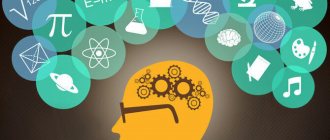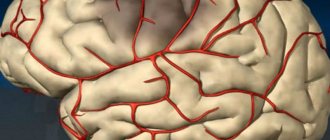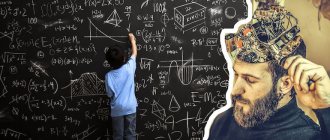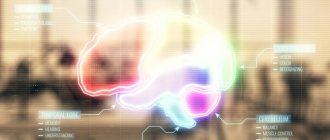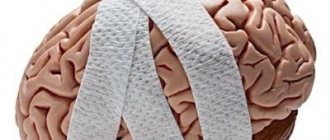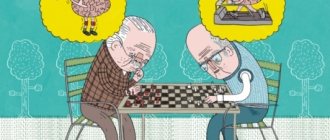By visual memory we mean a special type of memory that is responsible for recording and reflecting visual images, as well as for their use in the process of communication.
Visual memory is responsible for storing and reproducing received visual images. With its help, we remember people's faces, navigate the area and recognize objects. When we see a person's face, our brain undergoes a complex process of comparing this visual image with those already stored in our long-term memory. If the images coincide, then we identify this person as an acquaintance. This entire process happens in a matter of seconds.
It also happens that when we meet a person for the second time, we cannot immediately remember when and under what circumstances we saw him. There are also people who find it difficult to recognize the face of the person with whom they spent the whole day. One of these people is mentioned in the documentary “My Extraordinary Brain. Make me a genius."
The main character of the film had a phenomenal visual memory, which was by no means given to her by nature. This result was a reward for hard training that lasted for years. We highly recommend watching this film if you haven't seen it yet.
It should be noted that visual memory is very related to imagination. Therefore, by developing your imagination, you contribute to the development of visual memory, and vice versa.
Visual memory training
So how to develop visual memory? Fortunately, this can be done with the help of special training exercises and games to develop visual memory.
For example, to train visual memory, you can perform the following tasks:
Use the Spot the Difference pictures.
This is one of the most popular tasks, and there are many of them on the Internet.
Sometimes we think that this is just child's play, but this exercise helps us pay attention to details, which subsequently leads to better memorization.
Remember and describe people's appearance.
Each of us has many acquaintances. Of course we will recognize them. But we are unlikely to be able to fully describe their appearance and facial features the first time. Try to make an identikit or describe in detail at least one of the people closest to you. You will see that it is not so simple. But nothing is impossible either, try, and over time it will turn out better and better.
Draw from memory.
Try to make sure that you always have a notepad and pencil at hand. Try, in your free minutes, to redraw tree branches, a subway map, curves on a stone... First redraw, and then draw from memory. Try to maintain all proportions and line thickness. Of course, you can draw anything you want. Drawing in itself is an exercise for developing visual memory. In this case, it is not so much the ability to depict well that is important, but the desire to transfer remembered images from memory to paper as accurately as possible.
Use matches as auxiliary material.
Take a few matches (5 is enough to start with) and throw them on the table. Look at the shape they formed. Then turn away and try to reproduce the same figure using other matches. Compare how similar they are. If you do well enough with 5 matches, try increasing their number.
Connect other senses.
Imagine what this or that object would sound like, what color the number or letter would be. By connecting sounds or smells to visual images, you will enable your brain to better retain them in memory.
Remember the events of the past day
Before going to bed, remember the events of the past day in the form of “pictures”, “scroll through the event feed”, trying to clearly “see” all the details. As you can see, no special preparations are required for such a workout. Only a habit, if you decide to do it.
Memorizing an item
Find an object that pleases you and look at it for 3-5 minutes. Then close your eyes and try to imagine this object as brightly and clearly as possible. Give this approximately 3 minutes. Try again and again. When it seems like it’s working out, move on to the next stage: prepare a sheet of white paper, place it behind you, and after studying the object, turn your back to it and look at the white sheet, try to “see” a clear image of this object on it.
Cognitive trainers
Use online games to develop visual memory. On our website you can develop visual memory with the help of special gaming simulators.
How to develop visual (photographic) memory?
To develop a child's visual memory
, it needs to be trained by performing special exercises, for example, the following:
Exercise “Photographer”
Children enjoy playing this game, especially since you can play it almost anywhere. You can write words on the sand, on the asphalt with chalk, even on a foggy bus window. Of course, ideally, we write words on paper or a board, but in some cases you can use improvised materials.
The game exercise “Rhombus” is built on the basis of this exercise.
In the process of performing this exercise, the child increases the angle of vision, develops visual memory and attention.
. All these qualities are very necessary for successful learning and good reading technique. It turns out that by doing one exercise, we kill several birds with one stone: we develop memory, attention, increase the angle of vision, and therefore the reading technique.
Of course, if you do this exercise once, it won't help much. Like any workout, it should be done regularly and little by little. Choose time that you can allocate 2-3 times a week and study. You need very little time, 10-15 minutes, for first-graders, and even less for older children.
Visual memory in children
Even in preschool age, children actively involuntarily memorize words, objects, concepts, images, therefore, during the “child-why” period, it is especially favorable to use special games designed to train visual memory in children. This will prepare the child well for school and will help him perceive complex and voluminous information. Voluntary memory requires effort and the manifestation of attention and will to remember, this also applies to voluntary visual memory. General recommendations for good memorization are:
- What is interesting, bright, and emotionally presented is remembered better.
- The beginning and the end are the most memorable moments.
- What is explained simply and clearly will be remembered better.
- If, in addition to visual, other types of memory were involved (tactile, auditory, motor, etc.), then memorization will be more effective. The most common are mixed types of memory, especially visual-motor or, as it is also called, visual-motor memory.
Attention and attention again
There are people who are observant by nature. Finding themselves in an unfamiliar place, they remember everything they see, and then easily reproduce it from memory. This can also be achieved arbitrarily. Every day, walking along the same route, you can remember all the objects you come across along the way: houses, fences, trees, transformer boxes, and then, as they say, when you reach your final destination, you can restore the entire route in your memory.
But if you change the route during the week, the range of objects for memorization will expand even more, which means that the training will become more intense. In this case, it is advisable not just to remember the color or number of floors of the house, but also how many windows there are across the width of the floor, or how many entrances, or what swings are on the playground in front of the house. By “scrolling” the entire tape in reverse order in your memory and remembering all these details, you can achieve phenomenal visual memory, and at the same time become very observant, which, in turn, will create a readiness to master other activities: for example, observation will help you become a good criminologist, expert or a psychologist.
Diagnostics of visual memory
To diagnose visual memory in children at home, you can use, for example, a technique called “Ten Pictures”. To do this, prepare a sheet with small pictures of objects or animals pasted on it. You can use drawings instead of pictures, but they must be recognizable. Let your child study the pictures for 50 seconds (alternatively, you can use individual pictures, in which case each should be looked at for 5 seconds).
Then take the piece of paper and ask them to name all the images from memory. The order doesn't matter. This tests short-term visual memory. If a child remembers at least 8 images, this is an indicator of good visual memory. From 4 to 7 images is medium, and 3 or less is low. This test can also be used to determine the volume of visual memory. We’ll tell you how below.
Hobbies and mini-workouts
It is not at all necessary to use exercises that require a large amount of free time to develop visual memory. You can get by with short daily workouts or use your usual hobbies for this purpose.
Such methods will allow you to achieve results with minimal time. However, you should not expect particularly high efficiency from them. These options are perfect for those who just want to slightly improve the quality of visual memory or enhance the effects of basic exercises that are used every day.
Reading
The first way to train visual memory is reading. It also develops the classic skill of remembering information, increases vocabulary and improves intellectual abilities. For people who consider this type of activity to be their hobby, this option will be a real gift.
Any book will do to achieve your goal. They should be chosen based on their interests and abilities. If you wish, you can read a serious scientific paper or a textbook on a school subject that you once had problems with in the past. It is complex literature that brings maximum effect.
Drawing
Many children draw every day. This exciting activity has its own benefits, which, under certain conditions, can be used to improve visual memory. If a child engages in ordinary drawing, then his imagination develops, perseverance appears, and creative abilities are formed.
It is very simple to ensure that your child develops memory during classes. To do this, it is enough to ask him the rule that he needs to draw a place that is familiar to him or a well-known object. His goal will be to display the picture as accurately as possible with minimal deviations from reality. This method is suitable for a preschooler or elementary school student. If the task becomes more complex, it can be used even by adults.
Novelty
The simplest way to develop visual memory. It consists of filling your life with something unusual, with which you have never made eye contact. It could just be new places or sudden acquaintances.
This method is easy to use. You just need to go to work or other famous places along unusual routes that you have never been to before. You can also just walk in unfamiliar areas or even go to another city. At the same time, you need to make new acquaintances.
Memories
A good development of figurative memory can be obtained with the help of a simple exercise. It is best to perform it every day at home before bed. For some people, it will spark an interest that will make them want to pay extra attention to detail throughout the day.
A person's task is to simply remember his entire day in chronological order. This must be done taking into account all the smallest details, and you should try to find memories even of those things that you did not have to pay special attention to.
Portrait
Anyone who has met several people during the day can use this method. You will have to try to remember exactly what any of them looked like. If you managed to observe a passerby for a long time, then you need to remember all his actions.
“Portrait” is best used first on familiar people, because Trying to remember a random passerby from among the hundreds of people you encountered in a day is quite difficult. When it becomes easy, you can move on to strangers.
Examining the subject
The simplest mini-workout. It will require any item and a few minutes of free time. It is advisable to use things that you rarely come into contact with.
You just need to look at the object for a minute and then close your eyes. The task will be to mentally visualize what you see. You should try to remember the picture as clearly and correctly as possible.
Additionally, you can use your own personal mini-trainings, which require the use of visual memory.
Visual memory test
Various methods are widely used as a test for visual memory in children. To study visual memory, let’s consider one of the most accessible tests, and for this we will return to the already familiar one, called “Ten Pictures”. In this case, individual pictures are used to diagnose visual memory capacity. Each one is shown for 5-6 seconds, they are asked to name everything remembered from memory, but the testing does not end there. As you answer, pay attention and note the following points:
- were there any repeats?
- Were there imaginary objects or animals that were missing from the images shown?
- What is the number of correctly named images?
After this, show your child all the pictures that he did not remember. After 10 minutes, ask your child to remember all the pictures. The results are assessed as follows: if the child remembered 8-10 pictures, this is a good result; 5-7 is satisfactory, and 5 or less is unsatisfactory.
To determine visual-spatial memory, you can, for example, show the child for a short time a sample of a schematic drawing of a table (chair, bed, etc.), ask him to look at it carefully and then draw the same one.
Functions
Life
Thanks to it, faces, routes, printed information, interior, appearance, clothing and many other images of the surrounding world that are perceived through the eyes are remembered. Its absence is akin to blindness. Without it, you can get lost and not get home, not recognize your loved one. And even basic soup cannot be prepared, because in this case a person will not remember what products are needed for it and in what order to put them.
Creation
Without it, imagination does not develop, which means there is no ability to be creative. They are closely related. The creation of new images occurs on the basis of visual experience obtained previously. Moreover, they can be taken both from reality and from films or paintings.
Professional activity
For every profession, a certain type of memory is important. For example, for surgeons and jewelers - tactile, for a musician and speech therapist - auditory, for a dancer and sapper - motor. Sometimes they give a list of specialties for which the visual is supposedly at the forefront: drivers, conductors, heads of large organizations, spies, waiters. In fact, there is not a single person in whose work it is not used. Yes, one move by the surgeon can cost the patient his life. But shouldn’t he just as accurately remember where each aorta goes, so as not to accidentally touch it? A musician keeps notes in his head, a speech therapist keeps the structure of the articulatory apparatus, etc.
Socialization
Psychologists have long noted that people with poor visual memory have problems with social adaptation. This is connected with two points. Firstly, they do not remember faces; they may walk past someone they know and not say hello. Secondly, the same binary verbal-visual sequence is disrupted, names and patronymics are forgotten, which interferes with communication. A mother comes to a parents' meeting at her child's school and cannot address the teacher because she does not remember his name.
Education
Pupils and students need to remember huge amounts of information. They receive most of it through their eyes: they read and study notes, textbooks, and material on websites. 80% of all didactic material in kindergartens, schools and universities is visual: cards, pictures, diagrams, tables, diagrams. If a child initially has serious problems with visual perception, it will be difficult for him to learn a basic poem. In such cases, you will have to focus on the leading type of memory or still try to develop photographic memory.
Visual memory capacity
The volume of visual memory is an important indicator on which the possibility of storing a particular amount of imprinted information depends. To determine the volume of short-term and operative memory, there is the following technique: the child is alternately asked to study two drawings, which are randomly arranged broken lines consisting of 9 segments.
After memorizing each of these two drawings, the child is offered a stencil frame on which he must display as accurately as possible from memory the lines depicted in each of the drawings. Based on two experiments, the average number of lines correctly reproduced from memory is determined.
This indicator is taken as the volume of visual memory. Correct reproduction means a deviation from the original pattern in length by no more than one cell in each line, while maintaining the correct angle of inclination.
Working visual memory shows how long a person can retain and use information necessary to solve a problem. The indicators of a child’s visual operative memory are determined, for example, using the following test: the child is asked to look at cards in the form of six differently shaded triangles for 15 seconds. Then the child receives a matrix of 24 different triangles (4 cards of 6 triangles each) and finds among them those that he memorized on six cards initially. Dividing the amount of time required to solve (in minutes) by the number of errors and adding one, we obtain the desired value - an indicator of the development of visual RAM.
Courses for the development of intelligence
In addition to games, we have interesting courses that will perfectly pump up your brain and improve your intelligence, memory, thinking, and concentration:
Development of memory and attention in a child 5-10 years old
The purpose of the course: to develop the child’s memory and attention so that it is easier for him to study at school, so that he can remember better.
After completing the course, the child will be able to:
- 2-5 times better to remember texts, faces, numbers, words
- Learn to remember for a longer period of time
- The speed of recalling the necessary information will increase
Sign up for a courseRead more
Secrets of brain fitness, training memory, attention, thinking, counting
If you want to speed up your brain, improve its functioning, improve your memory, attention, concentration, develop more creativity, perform exciting exercises, train in a playful way and solve interesting problems, then sign up! 30 days of powerful brain fitness are guaranteed to you:)
Sign up for a courseRead more
Super memory in 30 days
As soon as you sign up for this course, you will begin a powerful 30-day training in the development of super-memory and brain pumping.
Within 30 days after subscribing, you will receive interesting exercises and educational games in your email that you can apply in your life.
We will learn to remember everything that may be needed in work or personal life: learn to remember texts, sequences of words, numbers, images, events that happened during the day, week, month, and even road maps.
Sign up for a courseRead more
How to improve memory and develop attention
Free practical lesson from advance.
Sign up for freeRead more
Money and the Millionaire Mindset
Why are there problems with money? In this course we will answer this question in detail, look deep into the problem, and consider our relationship with money from psychological, economic and emotional points of view. From the course you will learn what you need to do to solve all your financial problems, start saving money and invest it in the future.
Sign up for a courseRead more
Speed reading in 30 days
Would you like to quickly read books, articles, newsletters, etc. that interest you? If your answer is “yes,” then our course will help you develop speed reading and synchronize both hemispheres of the brain.
With synchronized, joint work of both hemispheres, the brain begins to work many times faster, which opens up much more possibilities. Attention , concentration , speed of perception are enhanced many times over! Using the speed reading techniques from our course, you can kill two birds with one stone:
- Learn to read very quickly
- Improve attention and concentration, as they are extremely important when reading quickly
- Read a book a day and finish your work faster
Sign up for a courseFree lesson
We speed up mental arithmetic, NOT mental arithmetic
Secret and popular techniques and life hacks, suitable even for a child. From the course you will not only learn dozens of techniques for simplified and quick multiplication, addition, multiplication, division, and calculating percentages, but you will also practice them in special tasks and educational games! Mental arithmetic also requires a lot of attention and concentration, which are actively trained when solving interesting problems.
Sign up for a courseRead more
Visual memory impairment
As a rule, memory impairments are associated with stress, overwork, and they can also be a consequence of somatic diseases. Alcoholism is scary because it affects the liver and leads to hypovitaminosis. In addition, alcoholism affects brain structures. Memory impairment is also caused by cerebral circulatory disorders, cerebral vascular spasms, and age-related changes.
Visual memory disorders are associated primarily with trauma or tumor processes, which primarily affect the occipital zones of the cerebral cortex. This is expressed in a disorder of visual perception and difficulty in recognizing objects and objects perceived before, or if, when recognizing and understanding the purpose of an object, there are difficulties in naming it.
In some cases, insufficient development of visual memory may be associated with insufficient maturity of certain neural structures of the brain or visual analyzers in childhood and adolescence, or diseases and disorders of these structures. In this case, to study visual memory, taking into account specific nuances, you need to consult a medical specialist (neurologist, ophthalmologist, neuropsychologist).
Causes of poor memory
If a person has trouble remembering faces or gets confused in directions in the subway and underground passages, he may have problems with salary. It happens that a head injury in the back of the head leads to loss of visual memory. In addition, this includes such points as:
- deterioration of health with age;
- brain overload with excess information;
- lack of fatty acids in foods.
Logical thinking - what is it and how to develop it in an adult and a child
Smoking, drug addiction and alcoholism significantly reduce visual memory.
Important! Diseases associated with impaired brain activity can also lead to deterioration of mental health. For example, these include Parkinson's disease, Alzheimer's disease, stroke, and brain tumors.
Deterioration of visual memory
Features of visual memory
The peculiarity of visual memory is that in the process of holding a visual image in memory, it undergoes certain changes and is transformed. This could be, for example, simplification, ignoring some details, or exaggerating certain nuances, or changing in favor of greater symmetry, or changing shape (rounding, narrowing, or changing position in space), or changing color. These inaccuracies inherent in visual figurative memory can be both a disadvantage and an advantage, because in this way you can simplify the image, make it symbolic, bright, and unexpected.
A good visual memory presupposes a well-developed imagination. The process of memorizing material and reproducing it is largely based on this, because what we can easily imagine visually is, as a rule, easier to both remember and reproduce.
Roman room method
This method, also called the Cicero chain, is a very effective way to teach how to structure information for better memorization. The bottom line is this: the objects to be remembered must be mentally placed in a well-known room (for example, in your room), but in a strictly defined order. And then later, in order to reproduce the necessary information, you will need to remember this room.
Allegedly, this is exactly what Cicero, a famous Roman thinker and orator, did before his speech. As he walked through his home, he placed the most important points of his speech in familiar or favorite corners. And while giving a speech, it was as if I was walking along this route again, remembering the key moments. You can, of course, use not only a room or a house as such a “storage,” but also the street, a closet, or even your desk, as long as these objects are well known for remembering these very “nooks and crannies.”
Development of visual memory online
What improves memory? Games for the development of visual-spatial memory (for example, “Way of the Ninja”) sharpen the ability to remember the location of objects (shaded cells on the field) and require efficient functioning of the hippocampus. This is a great workout for the brain.
Developing visual memory online is one of the effective ways to train. it’s convenient: it’s enough to have at least a smartphone with the Internet, which today is no longer a problem. Training with online brain simulators is an accessible and fun way to develop not only visual memory, but also its other types, as well as attention, perception and thinking. The opportunity to observe the dynamics of your success, tangible changes for the better, visual statistics, participation in tournaments, and a competitive spirit will turn routine activities into a daily exciting game, very useful and effective.
Ways and methods of memory development
To begin with, it is worth noting that we often train our memory and attention using various everyday situations in everyday life. We remember what we want to buy in a store, try to remember the birthdays of relatives, friends and acquaintances, retell the contents of a recently read book or textbook - all this and much more is good memory training. However, the use of special exercises gives us the opportunity to concentrate on the specific goal of developing a certain ability of our memory.
When talking about memory training, it is important to understand that it is almost impossible to directly train a specific ability to memorize material. Memory always develops in close connection with our attention, perception, thinking, sense organs and other phenomena of human nature. Therefore, most of the exercises below produce a complex effect on our thinking, as well as on our memory as an important component of thinking. For convenience, the exercises are divided into 2 groups: visual and auditory, and together they form an important part of our memory improvement training.
Visual memory games
You can help your preschool child develop good visual memory and at the same time train or test your own. We offer several games for visual memory:
Name the picture
Prepare 10-12 pictures, place them on the table and look at them with your child for 1 minute. Then hide or cover the pictures and take turns with your child to name one at a time, without repeating. The one who cannot name the remaining picture will lose.
What changed?
Prepare about 8 small items or toys. A pencil, a pen, an eraser, a block of plasticine, a typewriter, a hairpin, a coin, a button, etc. will do. Place the objects on the tray, let the child look for 40 seconds, ask him to turn away and change something (remove, add or change the arrangement of objects). So what has changed? Swap places with your child, now it’s your turn.
Draw from memory
Prepare several sheets of paper and a pencil. On one sheet of paper, draw a simple figure or pattern, show it to the child for 20-30 seconds, remove it, and ask him to draw from memory. See what happened together. Now you.
Games to develop visual memory can become a useful habit, a part of life, as natural and integral as exercise or washing your face. And you will learn to notice details, instantly “grab” them and retain them in memory. In addition, exercises for developing visual memory can become a favorite joint activity with children. Don’t be upset if something doesn’t work out right away: behind any achievement there is hard work. But it is in your power to make it exciting, turn it into a game, and fall in love with it.
We sincerely wish you success in self-development!
Mnemonics
This mysterious word actually refers to a whole set of exercises aimed at memorization (“mnemo” - memory). These can be exercises aimed at remembering faces, last names and names, and phone numbers. To do this, it is important to arrange the information in a special way. If a telephone number with 11 digits located in it seems extremely difficult to perceive, much less remember, then these same numbers, broken up by signs - brackets and hyphens, will be remembered with ease.
If at the same time the name of this person and his face appear in memory, then we can talk about certain successes. Remember how Gleb Zheglov in the film by Stanislav Govorukhin masterfully remembered all the nicknames of the alleged criminal. The effect will be much greater if you remember the phone numbers of unfamiliar people, for example, customers or visitors.
There are techniques designed for self-hypnosis or hypnosis. People prone to such characteristics can, with the right mood, remember an entire book, and for the rest of their lives. But there are only a few of them, but exercises with Schulte tables are available to anyone. They are used in teaching speed reading, since when working with tables, the speed of visual search movements increases and the pace of perception of the necessary information accelerates. They help expand peripheral vision.
Initially, Schulte tables were used for neurolinguistic programming to induce a state of high productivity to switch consciousness and perform sequential logical operations.
The simplest techniques can be exercises for comparing similar pictures that contain a certain set of differences. Or, on the contrary, such images in which it is practically impossible to find something in common, and only associations can evoke the necessary information in the mind.
Of course, visual memory can develop naturally in those people who, as part of their job, have to remember many faces: teachers, conductors, conductors. However, it is important to understand that even the lack of good memory as such is not a death sentence, and through hard training you can achieve good results. The main thing is to perform exercises in the system.
How to develop short-term memory?
- The brain also needs a “gym”. To develop the cognitive functions of the brain, regular training on online developmental simulators is successfully used. Comprehensive programs for training memory, attention, thinking, and perception help the comprehensive development of cognitive functions.
- Repetition is the mother of learning. By repeating the necessary information to ourselves every 14-16 seconds, we “update the data.”
- Simple and emotional is much better than complex and bland. Simplify the information as much as possible and support it with emotions.
- Motivation is a powerful weapon. Give yourself the mindset that you simply need this information in the future.
- Develop figurative memory. Simple associations and other mnemonic devices help to “tie” the desired word to an image (to a part of the body, to an object in a familiar interior, or by composing an incredible story from words that are not related in meaning). Here are some tips:
- Unusual, rare - it means it will be remembered better. Create vivid images to remember.
- Divide long information into blocks that are easy to remember: for example, dividing a phone number or PIN code into parts associated with memorable dates; you can create images that reinforce a certain combination.
- Look for patterns, principles of organizing material, make connections.
- Use music and rhythm. Music can help with memorization if words (letters, text) that need to be remembered are set to the tune of a familiar melody. So, the English alphabet is remembered well by the song “Chizhik-fawn, where have you been?”
- Use the first letters of words that add up the necessary information: for example, Ivan chopped wood, Varvara lit the stove - the first letters suggest the sequence and names of cases in Russian (nominative and so on).
If we classify memory according to the nature of mental activity, figurative memory deserves special attention. It stores images: smells, sounds, visual ideas. One of the indicators of the individual typological characteristics of memory is the type of memory that is leading for a particular person. In this vein, visual, auditory, olfactory, tactile and other types of memory are distinguished.
Who has more developed
It is believed that girls have better visual memory than boys. But there are other factors that provide the best conditions for the development of abilities. To generalize, we can say that those people who constantly use it have a greater volume and quality of memory.
For example, residents of the Far North live in very harsh conditions and are surrounded on all sides by a monotonous, monotonous landscape. But their visual perception often saves them in critical situations, instantly noting the slightest deviations from the usual picture. For example, a shadow flashing in the distance may mean that there is a bear or a hungry wolf pack nearby, and a change in the color of the ice will tell you that you should not step on it - a crack will form there and there is a risk of falling into the icy water.
The same goes for people who constantly deal with various visual information. For example, a scientist will instantly recognize a formula familiar to him, and a car mechanic will “calculate” the cause of a breakdown based on the external state of the engine, because he has already seen such a picture more than once.
Kinds
The following symptoms and types of diseases that indicate memory impairment can be noted:
Amnesia - it is characterized by loss of any information or ordinary skills from memory over a certain period of time
Hypomnesia - a person loses the ability to remember necessary data, for example, house numbers, telephone numbers, names, surnames, titles and definitions of things. In a word, not all memory is affected.
When memory, on the contrary, becomes very acute, taking on pathological forms, we speak of hypermnesia.
Paramnesia is a qualitative memory impairment with complex symptoms that are difficult to classify. A person develops a false sense of recognition of events happening to him for the first time. It seems to him that all this has already happened to him before.
